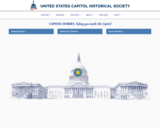
Capitol stories: taking you inside the capitol! Choose by historical era, themes, or specific stories.
- Subject:
- History
- U.S. History
- Material Type:
- Interactive
- Provider:
- United States Capitol Historical Society
- Date Added:
- 11/20/2020

Capitol stories: taking you inside the capitol! Choose by historical era, themes, or specific stories.

This 3-room video tour of the U.S. Capitol, featuring the Crypt, Rotunda, and National Statuary Hall.
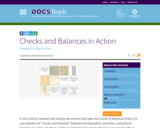
In this activity students will analyze documents that span the course of American history to see examples of "checks and balances" between the legislative, executive, and judicial branches in action. Students will then match the documents they have examined with an appropriate description of the branches of government involved in the action.

For many students, a trip to Washington, D.C. is a once-in-a-lifetime experience that opens their eyes to an exciting world beyond their classrooms. Discovery Education and First Lady Dr. Jill Biden welcome students to a behind-the-scenes Virtual Field Trip to experience the history and beauty of our nation’s capital.
Designed for students in grades 4-8, this action-packed tour features remarkable special guests and give viewers an inside look at six landmark locations:
The White House
The U.S. Capitol Building
The Supreme Court
The Martin Luther King, Jr. Memorial
Arlington National Cemetery and the Tomb of the Unknown Soldier
The Smithsonian National Air and Space Museum

This lesson will give your students the chance to compare and contrast Articles I and II of the Constitution, and the powers delegated to both the legislative and executive branches. Students will deeply examine the historic and current relationship between Congress and the President and how power and influence have seemed to ebb and flow between them over more than 200 years, including a look at the War Powers Act and how that has impacted the push-pull between Congress and the President, looking at some case studies from the past 35 years.
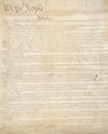
The nation’s founders believed Congress to be the fundamental institution of the federal government, since it is the body that most closely represents the people. The framers of the United States Constitution began by creating Congress. Then they established the other two branches of government—the executive branch and the judicial branches.The Constitution gives each branch distinct powers, but it makes sure that the three are in competition. Each branch has its own ways to check and balance the powers of the other two. The separation and balance of powers has contributed to the government’s enduring vitality, providing order and stability while allowing flexibility for adaptation and change.
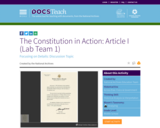
In this activity students will analyze the Oaths of Senators for the Impeachment Trial of William Jefferson Clinton and identify how the document demonstrates content contained within Article I, sections 1-7 of the Constitution in action.
This activity is designed to prepare students for the Constitution-in-Action Lab at the National Archives in Washington, DC. It is a part of a package of activities associated with the lab experience.
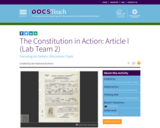
In this activity students will analyze the Declaration of Intention for Albert Einstein and identify how the document demonstrates content contained within Article I, sections 8-10 of the Constitution in action.
This activity is designed to prepare students for the Constitution-in-Action Lab at the National Archives in Washington, DC. It is a part of a package of activities associated with the lab experience.
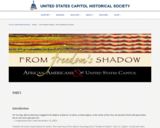
Freedom for some meant slavery for others. The cruel irony of this nation’s founding and its “Temple of Liberty”—the U.S. Capitol—is that both were made possible by the enslavement of African Americans.
The labor of enslaved and free blacks helped build the Capitol. An enslaved African American man helped to cast the Statue of Freedom, which was placed atop the Dome during the Civil War.
Since the end of the Civil War, African Americans have struggled to move out of the shadows and into the Temple of Liberty as full participants.
This the online version of a traveling exhibit by the U.S. Capitol Historical Society that depicts the journey of African Americans from slavery to freedom and political representation in the U.S. Capitol. The exhibit opened February 2006 in Baltimore, Maryland at the Reginald F. Lewis Museum of Maryland African American History and Culture.
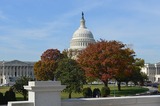
Of the three branches of our government, many believe that the most important is the one directly elected by "We the People": the legislative branch, represented by the two houses of the U.S. Congress at the Capitol building. Join a group of middle schoolers on a tour of Washington, D.C. as they learn about the Constitution and what it means to be "We the People." The "We the People" videos are produced in collaboration with the U.S. Capitol Historical Society.